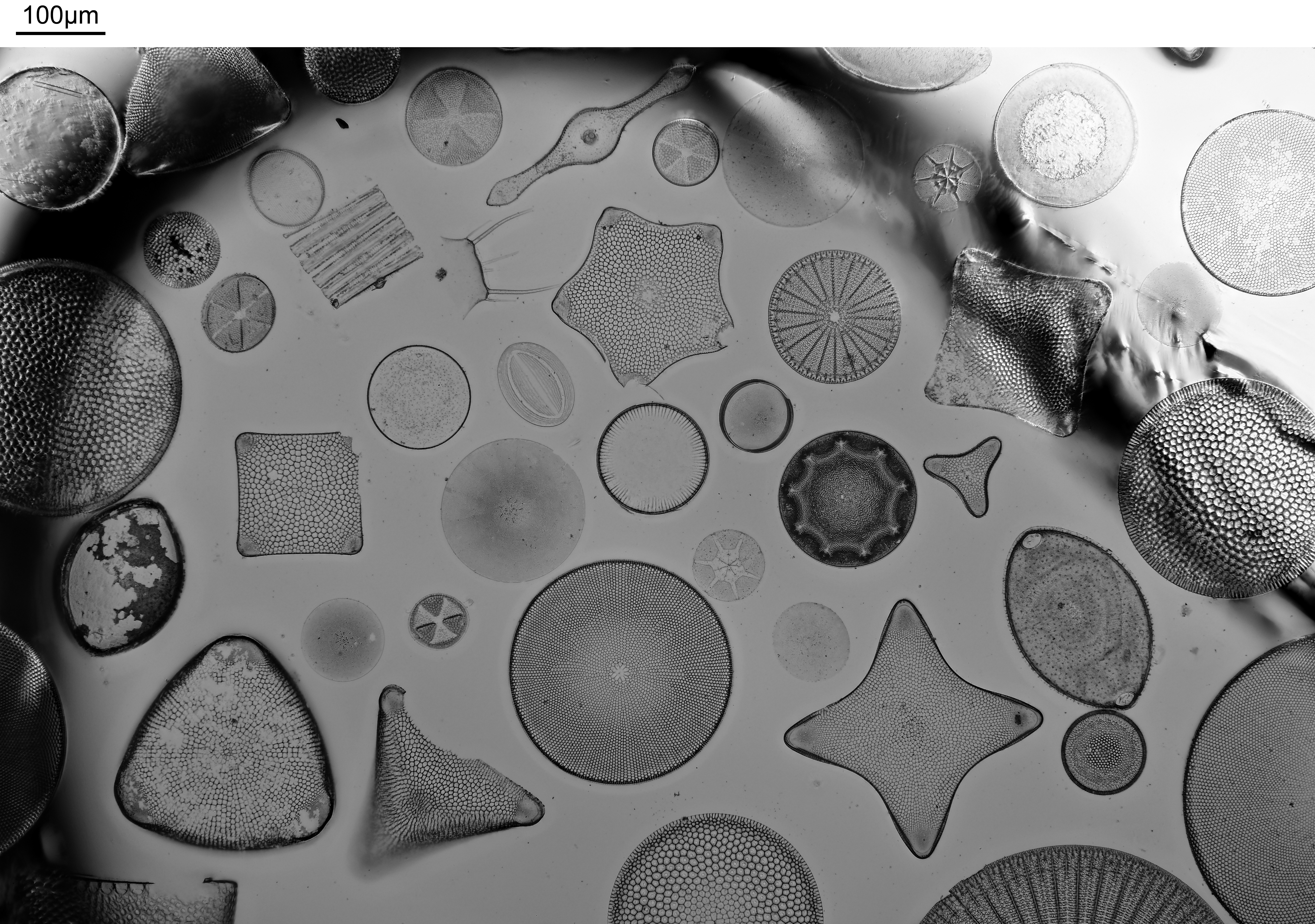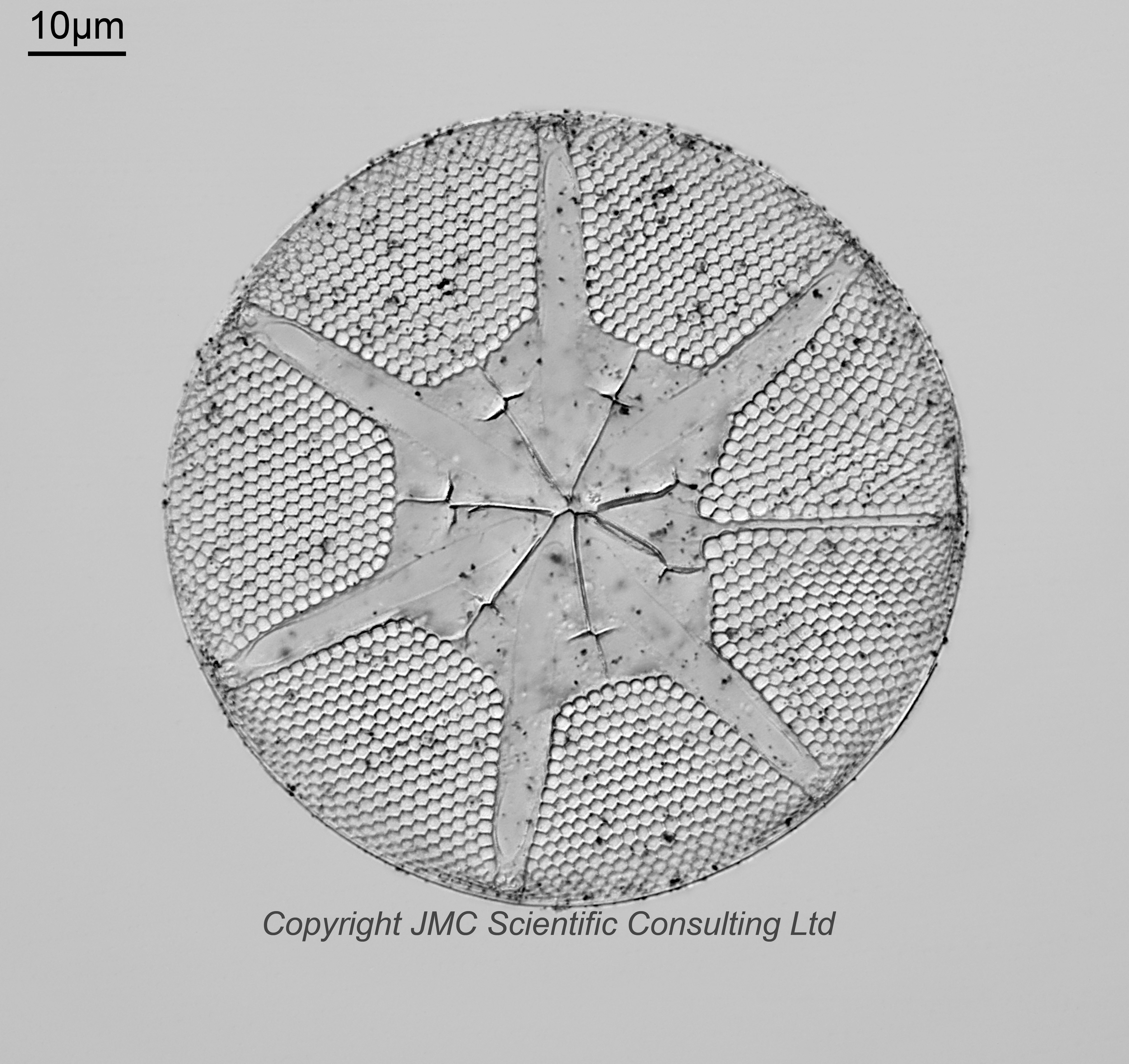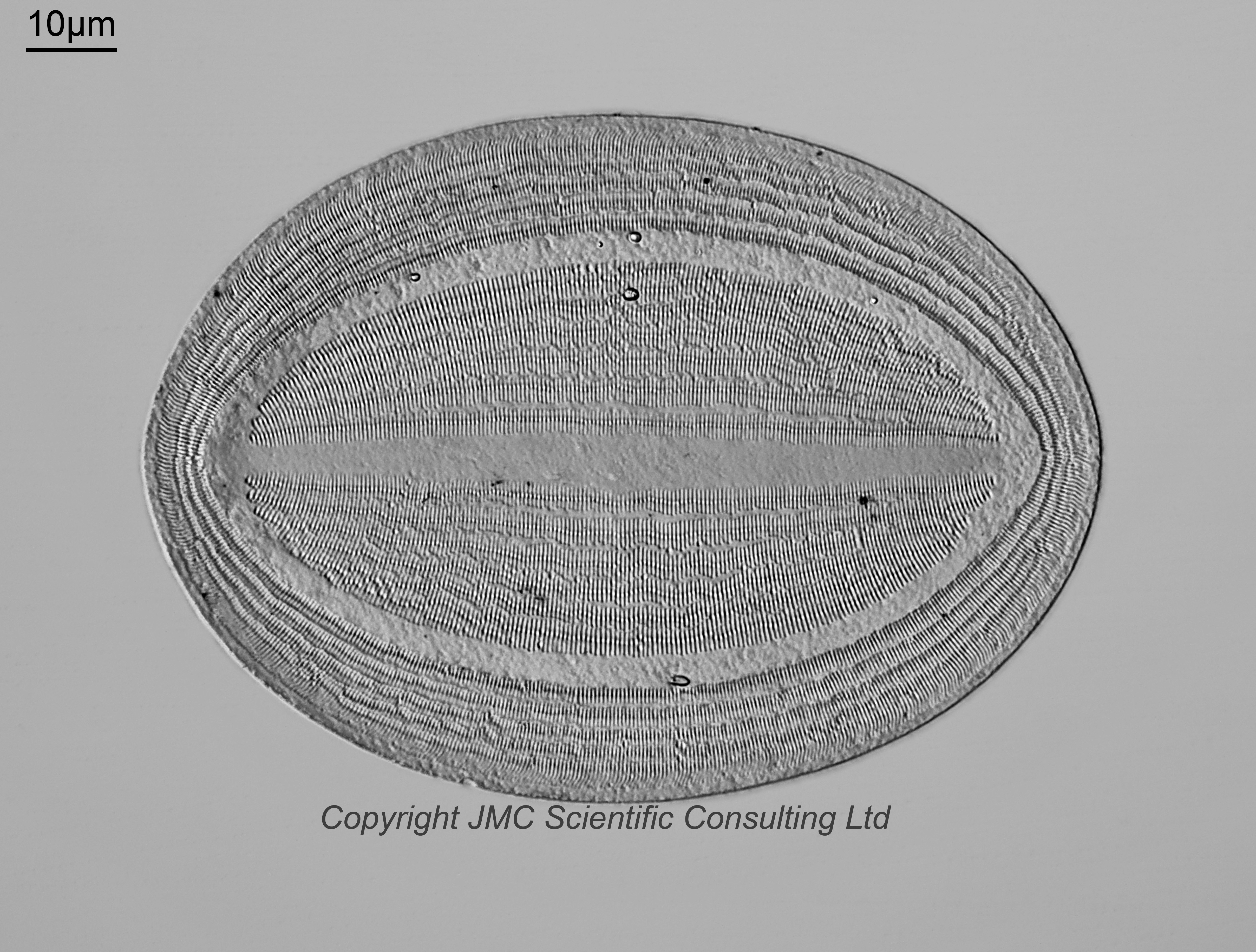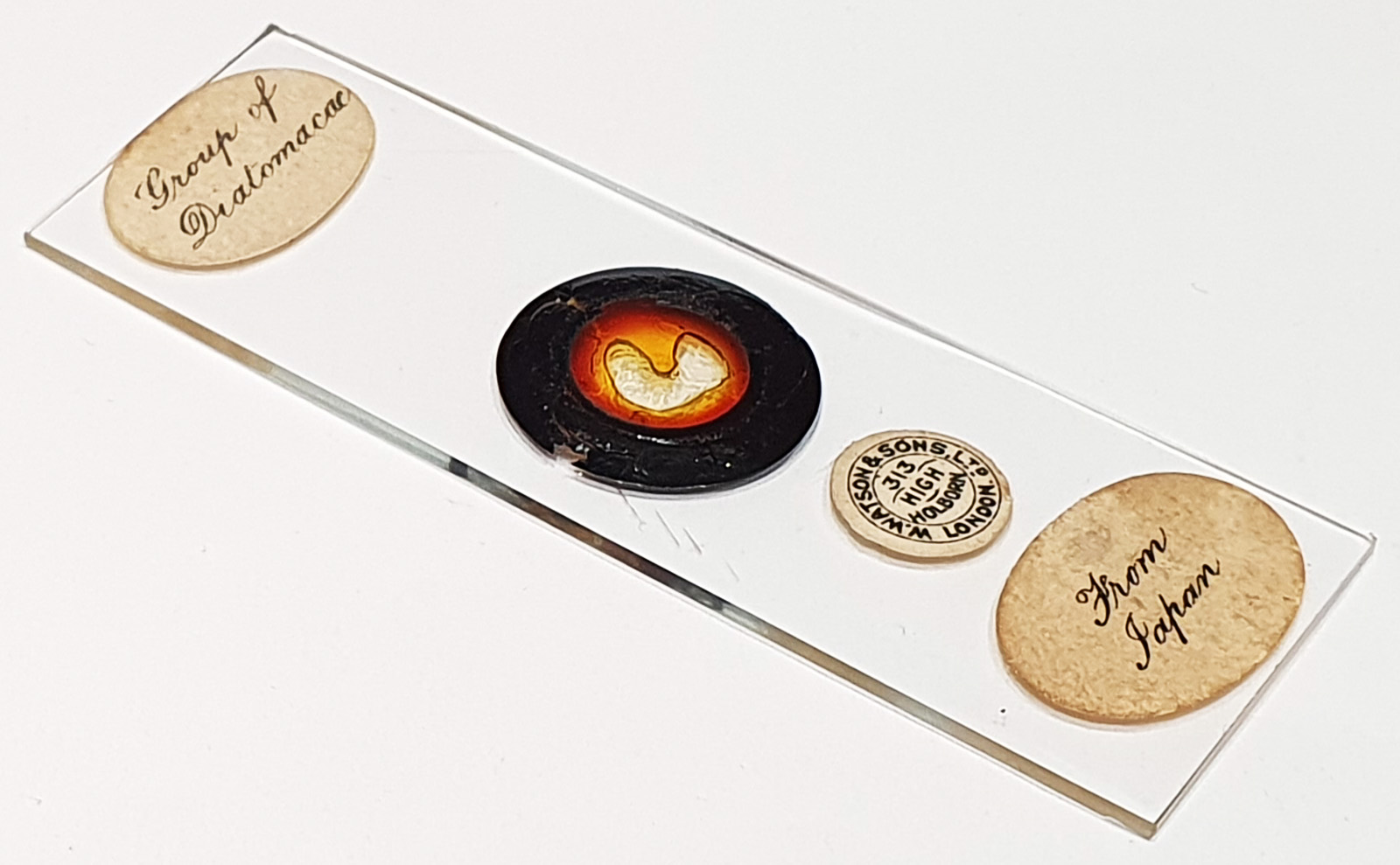








An arrangement showing a group of diatoms from Japan, prepared by Watson and Sons Ltd. The mountant on this slide is extremely degraded and less than half the diatoms are covered by it. Sad to see, but I wanted to capture some of the images from it before it completely went.
Olympus BHB microscope using 450nm LED light (unless noted). Olympus Aplanat Achromat condenser (oil immersion with the 40x and 63x objectives). 2.5x Nikon CF PL photoeyepiece. Monochrome converted Nikon d850 camera. Where used images were stacked using Zerene (Pmax).
Various diatoms inc. Rutilaria sp.. Imaged using a 40x Leitz Pl Apo NA 1.00 objective, oil immersion. Brightfield lighting. 37 images stacked. I captured this image mainly for the Rutilaria sp. which I think could be Rutilaria obesa. In the article by Ross, R. 1995. A revision of Rutilaria Greville (Bacillariophyta). Bulletin of the British Museum (Natural History) Botany Series 25(1):1-93, 20 pls, the name R. obesa seems to cover some very different forms, so another possible name would be Rutilaria capitata. Only part of this was still in the mountant although stacking was still possible.
Asteromphlaus sp.. Imaged using a 63x Leitz Pl Apo NA 1.40 objective, oil immersion. Oblique lighting. 21 images stacked. Viewed from the underside with some dark covered debris across the diatom. I think this could be Asteromphalus ralfsianus (Schmidt’s Atlas Plate 38, Fig 8 from Yokohama). If that is the case then the accepted name is Spatangidium ralfsianum G.Norman, 1859.
Cocconeis sp.. Imaged using a 63x Leitz Pl Apo NA 1.40 objective, oil immersion. Oblique lighting. 28 images stacked. Few possible names; Cocconeis notabilis (Schmidt’s Atlas Plate 194, Figure 13), Cocconeis circumcincta (Schmidt’s Atlas Plate 195, Figure 9) which is from Japan and pretty good match. Also Cocconeis curvirotunda Temp. &. Br. (Schmidt’s Atlas Plate 196, Figure 13). Again, from Japan and good visual match. This name is currently regarded as a synonym of Cocconeis heteroidea var. curvirotunda (Tempère & J.-J.Brun) Cleve. I measured the ‘striae’ (not sure if that is the right terminology here) spacing as 456nm in ImageJ.
Isthmia sp.. Imaged using a 20x Nikon Plan Apo NA 0.65 objective. Oblique lighting. 35 images stacked (Pmax). Could potentially be Isthmia enervis or Isthmia japonica (old name Isthmia enervis var. japonioca). I also did a single image of this one with a 63x Leitz Pl Apo NA 1.40 objective, oil immersion and oblique lighting, to better show some the structures present. As the surface wasn’t flat this image shows features at different depths quite nicely.